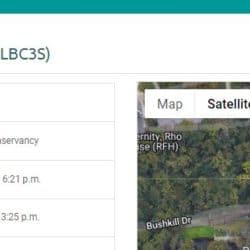Forum Replies Created
-
AuthorPosts
-
There are no workshops scheduled yet for 2025, but you can review past events and check in from time to time for new events under the Participate tab, https://www.envirodiy.org/envirodiy-events/.
Griffith 2014. Natural variation and current reference for specific conductivity and major ions in wadeable streams of the conterminous USA, https://www.journals.uchicago.edu/doi/full/10.1086/674704
If your sensor is in water that is deep enough so that ice doesn’t form around the sensor itself then you should be ok. If ice forms around a sensor itself that can be a problem. The Meter Group Hydros21 CTD sensors have pressure transducers that can break if ice forms around the sensor. The new model CTD seems to have a pressure transducer that is less vulnerable to freeze damage than the previous model but I think that’s it’s still not totally clear. @shicks can probably provide the best answer.
Blog by Jim Moore with the Great Marsh Institute on protecting cables from rodent chewing: https://www.envirodiy.org/protecting-mayfly-sensor-stations-from-beaver-damage/
John,
If you’ve created a MonMW account then log in to that account, go to the Bushkill site (https://monitormywatershed.org/sites/ULBC3S/), and click the “Follow” box in the upper right corner of the site page (circled in red on attached). That should allow you to receive updates if/when the station stops transmitting. Please let us know if you see issues though – the MonMW site is in transition to Amazon Web Services and we appreciate feedback on bugs, etc.
Attachments:
@jlemontu-org, yes as @shicks pointed out you or your colleague can follow up on this on ODM2DataSharingPortal Github issues page.
This is a known issue and I did already post to github about it, but if you want to add more info you can go to that post: https://github.com/ODM2/ODM2DataSharingPortal/issues/551
From Dave Funk, entomologist at the Stroud Center (https://stroudcenter.org/people/funk/): “I’d be very surprised if there were any among the EPT’s–no structures I am aware of that might suggest either a source or sensor. It seems to me the most likely place to find sound communication in aquatic insects would be among (non-benthic) adult beetles or true bugs in still waters, e.g., dytiscids, hydrophilids, corixids, etc…”
@movingplaid, as far as I can tell this issue is still being addressed: https://github.com/ODM2/ODM2DataSharingPortal/milestone/19
Thank you @aufdenkampe! Very helpful and informative update.
Thanks Robert S. Jim @w3asa your mouse wheel must be broken. And as Robert S points out the x-axis can be scrolled on within the graph itself, just not on the axis or the range at the bottom.
-
AuthorPosts

 Welcome to EnviroDIY, a community for do-it-yourself environmental science and monitoring. EnviroDIY is part of
Welcome to EnviroDIY, a community for do-it-yourself environmental science and monitoring. EnviroDIY is part of 